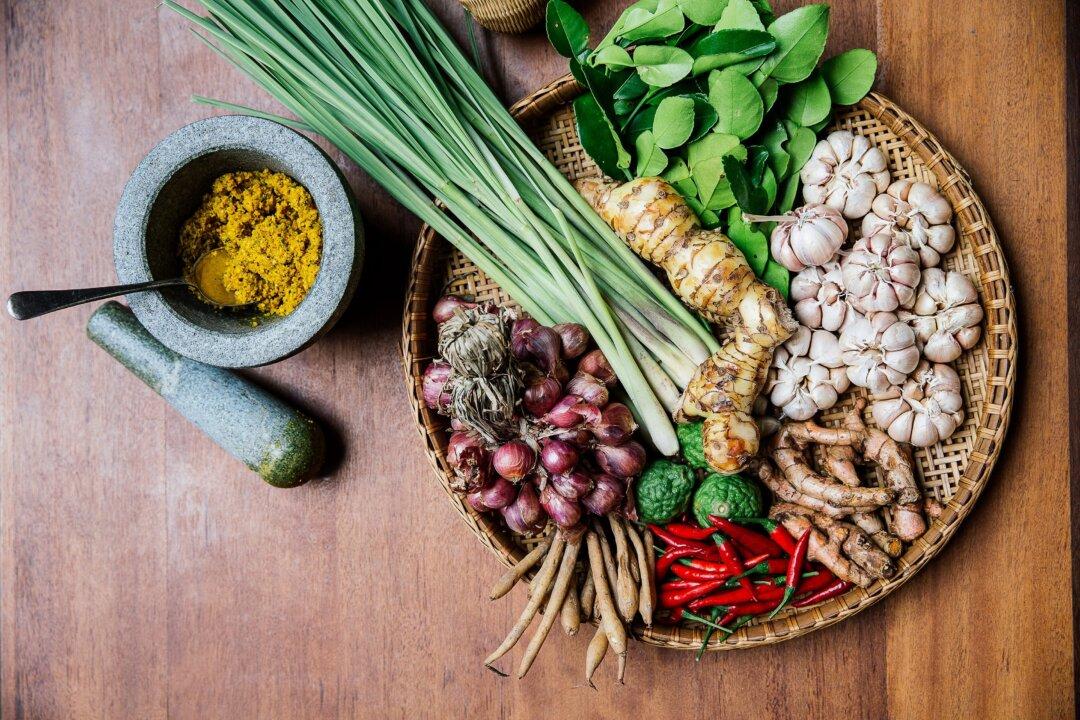Rotanak Ros, better known as Chef Nak, shares nine foundational ingredients of Cambodian cuisine. Together, these ingredients—along with many, many more spices, herbs, fruits and vegetables, meat and fish, and pantry products—create the cuisine’s rich and complex flavors.
Pepper
The quartz-rich foothills of the Elephant Mountains provide the unique conditions to create Kampot pepper’s world-famous flavor. The organically-grown plant can produce green, black, white, and red pepper, depending on when it is harvested.Cultivation practices have been passed down through the generations in Kampot Province for hundreds of years. In order to be authorized to use the Protected Geographical Indication, “Kampot Pepper,” accredited plantations are inspected by the Kampot Pepper Producers Association, as well as Eco-Cert, an independent certification body.






